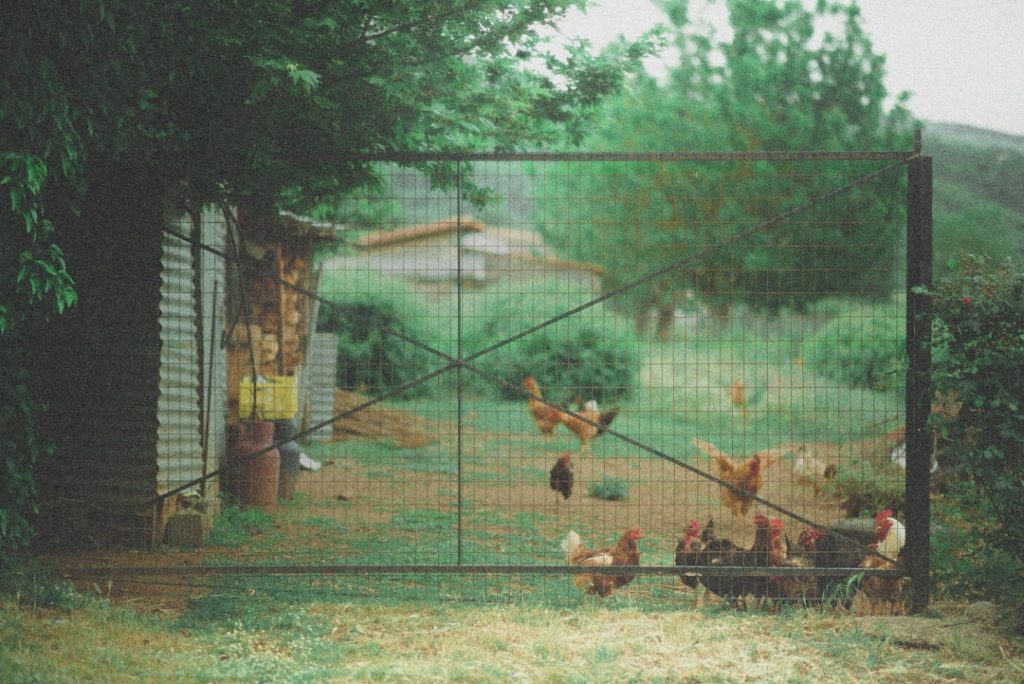Minks are small, semi-aquatic carnivorous mammals belonging to the Mustelidae family, which includes weasels and otters. They are characterized by their sleek, dark fur and sharp teeth, which they use for hunting. Minks are skilled predators and pose a significant threat to chickens and other small animals due to their agility and ability to squeeze through small openings.
These opportunistic hunters are particularly dangerous to chickens because of their relentless hunting behavior. Minks are known to kill more prey than they can consume, often leaving behind considerable damage. Their presence in a chicken coop can cause panic and chaos among the flock, potentially resulting in injuries or fatalities.
Chicken owners should be aware of the risks posed by minks and implement appropriate protective measures to safeguard their flocks. This includes securing coops against potential entry points and taking proactive steps to deter these predators from accessing the chicken enclosure.
Table of Contents
Inspect and Seal the Coop
Start by inspecting the coop for any gaps or openings that minks could use to gain access. Seal any holes or cracks with sturdy materials such as hardware cloth or metal mesh. Pay special attention to areas around doors, windows, and vents, as these are common entry points for minks.
Fortify Doors and Windows
Additionally, consider installing predator-proof latches on all doors and windows to prevent minks from forcing their way in.
Bury Hardware Cloth or Mesh
Another important step in fortifying your chicken coop is to bury hardware cloth or mesh around the perimeter of the coop. This will prevent minks from digging under the walls or fencing to gain access to your chickens. Make sure the buried mesh extends at least 12 inches below the ground to deter minks from digging underneath it.
Add Motion-Activated Deterrents
Finally, consider adding motion-activated lights or alarms around the coop to startle minks and deter them from approaching.
Monitoring the surroundings of your chicken coop is essential for identifying signs of mink activity and taking appropriate action to protect your flock. Look for tracks, droppings, or signs of digging near the coop, as these could indicate that minks are in the area. Mink tracks are small and narrow with five toes on both the front and hind feet, while their droppings are dark and twisted, similar in appearance to those of other small predators.
In addition to physical signs, pay attention to any unusual behavior in your chickens, such as increased agitation or signs of distress. Chickens have a keen sense of danger and will often exhibit signs of stress when predators are nearby. If you notice any of these signs, it is essential to take immediate action to secure the coop and protect your flock from potential mink attacks.
Monitoring the surroundings of your chicken coop is crucial for identifying signs of mink activity and taking appropriate action to protect your flock. Look for tracks, droppings, or signs of digging near the coop, as these could indicate that minks are in the area. Mink tracks are small and narrow with five toes on both the front and hind feet, while their droppings are dark and twisted, similar in appearance to those of other small predators.
In addition to physical signs, pay attention to any unusual behavior in your chickens, such as increased agitation or signs of distress. Chickens have a keen sense of danger and will often exhibit signs of stress when predators are nearby. If you notice any of these signs, it is essential to take immediate action to secure the coop and protect your flock from potential mink attacks.
Using deterrents is an effective way to keep minks away from your chicken coop and protect your flock from potential attacks. One popular method is to use predator scent deterrents, such as fox or coyote urine, around the perimeter of the coop. Minks are territorial animals and will avoid areas that smell like potential predators.
You can also consider using motion-activated sprinklers or ultrasonic devices to startle minks and deter them from approaching. Another effective deterrent is to plant strong-smelling herbs or flowers around the coop, such as lavender or mint. Minks have a keen sense of smell and will avoid areas with strong odors.
Additionally, consider using visual deterrents such as reflective tape or shiny objects near the coop to scare off minks. These methods can help create a hostile environment for minks and discourage them from approaching your chickens. Using deterrents is an effective way to keep minks away from your chicken coop and protect your flock from potential attacks.
One popular method is to use predator scent deterrents, such as fox or coyote urine, around the perimeter of the coop. Minks are territorial animals and will avoid areas that smell like potential predators. You can also consider using motion-activated sprinklers or ultrasonic devices to startle minks and deter them from approaching.
Another effective deterrent is to plant strong-smelling herbs or flowers around the coop, such as lavender or mint. Minks have a keen sense of smell and will avoid areas with strong odors. Additionally, consider using visual deterrents such as reflective tape or shiny objects near the coop to scare off minks.
These methods can help create a hostile environment for minks and discourage them from approaching your chickens.
Nighttime poses a significant threat to chickens as minks are nocturnal predators that are most active during the dark hours. To keep your chickens safe from mink attacks at night, it is essential to secure the coop with sturdy locks and latches that cannot be easily forced open by predators. Consider installing motion-activated lights around the coop to startle minks and deter them from approaching during the night.
Another effective strategy for nighttime protection is to use guard animals such as dogs or geese that can help deter minks from approaching the coop. Dogs have keen senses and will alert you to any potential threats, while geese are known for their aggressive behavior towards predators. Additionally, consider using electronic predator deterrents such as flashing lights or sound emitters that can startle minks and discourage them from coming near the coop at night.
Nighttime poses a significant threat to chickens as minks are nocturnal predators that are most active during the dark hours. To keep your chickens safe from mink attacks at night, it is essential to secure the coop with sturdy locks and latches that cannot be easily forced open by predators. Consider installing motion-activated lights around the coop to startle minks and deter them from approaching during the night.
Another effective strategy for nighttime protection is to use guard animals such as dogs or geese that can help deter minks from approaching the coop. Dogs have keen senses and will alert you to any potential threats, while geese are known for their aggressive behavior towards predators. Additionally, consider using electronic predator deterrents such as flashing lights or sound emitters that can startle minks and discourage them from coming near the coop at night.
Creating a Secure Area
To allow your chickens to roam while still keeping them safe from minks, consider using portable electric fencing or poultry netting to create a secure area for them to explore. This will help keep minks out while allowing your chickens to enjoy some freedom outside of the coop.
Supervising Your Flock
Another effective strategy is to supervise your free-range chickens while they are outside of the coop. Keep an eye on them at all times and be prepared to intervene if you notice any signs of potential danger. Consider using guard animals such as dogs or geese to help protect your free-range chickens from mink attacks while they are outside of the coop.
Combining Strategies
By combining these strategies, you can provide your chickens with a safe and enjoyable free-range experience. Remember to always prioritize their safety and take necessary precautions to protect them from potential threats.
In some cases, dealing with mink infestations may require professional assistance from a wildlife expert who has experience in dealing with predator control. If you have tried various deterrent methods but continue to experience mink attacks on your flock, it may be time to seek help from a professional who can assess the situation and provide effective solutions for protecting your chickens. A wildlife expert can conduct a thorough assessment of your property and identify any vulnerabilities that may be attracting minks.
They can also provide recommendations for fortifying your chicken coop and implementing effective deterrent methods based on their expertise in dealing with predator control. Additionally, a wildlife expert can offer guidance on how to safely remove any existing mink infestations without harming other wildlife in the area. In some cases, dealing with mink infestations may require professional assistance from a wildlife expert who has experience in dealing with predator control.
If you have tried various deterrent methods but continue to experience mink attacks on your flock, it may be time to seek help from a professional who can assess the situation and provide effective solutions for protecting your chickens. A wildlife expert can conduct a thorough assessment of your property and identify any vulnerabilities that may be attracting minks. They can also provide recommendations for fortifying your chicken coop and implementing effective deterrent methods based on their expertise in dealing with predator control.
Additionally, a wildlife expert can offer guidance on how to safely remove any existing mink infestations without harming other wildlife in the area.
If you’re looking for ways to keep your chickens safe from minks, you may want to consider building a secure chicken coop. A recent article on Poultry Wizard discusses the benefits of using a trampoline as a cover for your chicken coop to keep predators like minks out. Check out the article here for more information on this innovative method of protecting your flock.
FAQs
What is a mink?
A mink is a small, carnivorous mammal that is part of the weasel family. They are known for their sleek, dark fur and are skilled hunters.
Why are minks a threat to chickens?
Minks are known to be skilled predators and are capable of killing and eating chickens. They are agile and can easily access chicken coops and runs.
How can I keep my chickens safe from minks?
To keep chickens safe from minks, it is important to secure their coop and run with sturdy fencing and hardware cloth. Additionally, installing motion-activated lights or sound devices can help deter minks from approaching the coop.
Are there any natural deterrents for minks?
Some natural deterrents for minks include keeping guard animals such as dogs or geese, as well as using strong-smelling substances like predator urine or ammonia around the coop.
What should I do if I suspect a mink is targeting my chickens?
If you suspect a mink is targeting your chickens, it is important to take immediate action to secure the coop and run. You may also consider contacting local wildlife authorities for assistance in safely removing the mink from your property.
Meet Walter, the feathered-friend fanatic of Florida! Nestled in the sunshine state, Walter struts through life with his feathered companions, clucking his way to happiness. With a coop that’s fancier than a five-star hotel, he’s the Don Juan of the chicken world. When he’s not teaching his hens to do the cha-cha, you’ll find him in a heated debate with his prized rooster, Sir Clucks-a-Lot. Walter’s poultry passion is no yolk; he’s the sunny-side-up guy you never knew you needed in your flock of friends!







